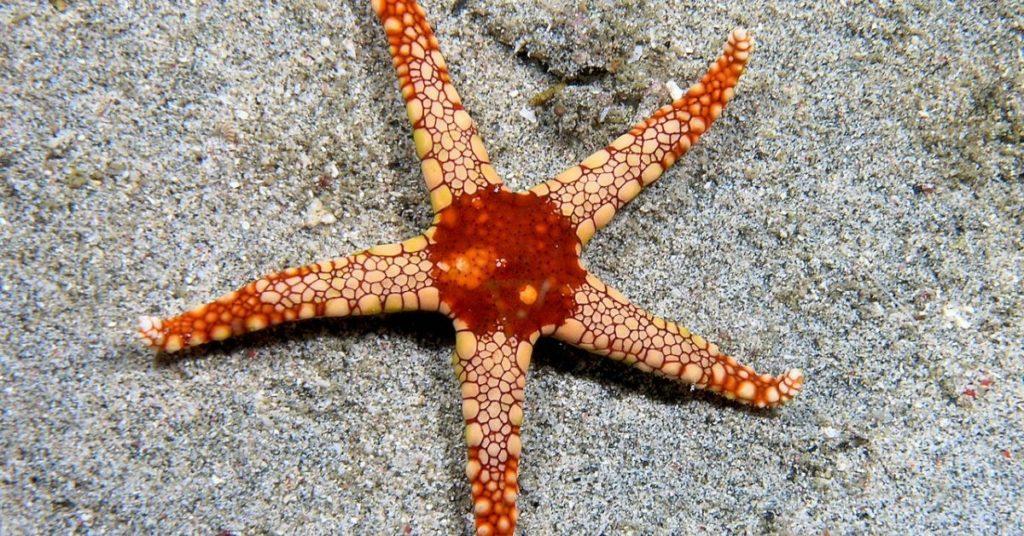FlipFact of the Day: These days, marine scientists are encouraging people to call starfish “sea stars” instead, for the simple reason that they aren’t fish. They’re actually echinoderms, marine invertebrates that are close relatives of sea cucumbers and sea urchins. There are around 2,000 species of sea stars scattered across the world’s oceans, and none of them have scales, gills, or fins. Another thing sea stars don’t have is a brain; luckily, they have rather impressive ways of getting around that.
Despite the absence of a brain, a sea star does have a nervous system, albeit a simple one. Surrounding its mouth is a nerve ring that’s connected to each of its arms via a radial nerve. Neurons stimulate the muscles on each of the sea star’s tube feet, which are located on the underside of its body. In addition, a sea star has eyespots at the tip of each arm. These eyespots have light-sensitive pigments that enable it to sense light and darkness in its surroundings.
This sensory setup enables the sea star to feel and make important decisions for survival, from finding food to avoiding danger. It also lets them move at impressive speeds: An adult sunflower sea star (𝘗𝘺𝘤𝘯𝘰𝘱𝘰𝘥𝘪𝘢 𝘩𝘦𝘭𝘪𝘢𝘯𝘵𝘩𝘰𝘪𝘥𝘦𝘴), for example, can reportedly move at speeds of up to a meter per minute, thanks to its 15,000 tube feet!
Over the years, scientists have been studying exactly how sea stars achieve coordinated motion without a brain. This may be the key to significant technological advancements in the future, particularly in robotics. (Kind of makes it a bit embarrassing to be a clumsy human, doesn’t it?)
Still remember your 5th-grade science classes? Test your knowledge and see if you still remember these facts and fundamental concepts in human anatomy, biology, botany, and other branches of science. Click here to try the “Are You Smarter Than A Pinoy Fifth-Grader” Challenge.
Follow the hashtag #FlipFacts on Facebook and Instagram to get your daily dose of science trivia!
Cover: Wikimedia Commons
References
- https://www.nationalgeographic.com/animals/invertebrates/group/starfish/
- https://oceanservice.noaa.gov/facts/starfish.html
- https://www.whalefacts.org/starfish-facts/
- https://faculty.washington.edu/chudler/invert.html
- https://viterbischool.usc.edu/news/2020/01/how-does-a-sea-star-bounce/
Author: Mikael Angelo Francisco
Bitten by the science writing bug, Mikael has years of writing and editorial experience under his belt. As the editor-in-chief of FlipScience, Mikael has sworn to help make science more fun and interesting for geeky readers and casual audiences alike.







